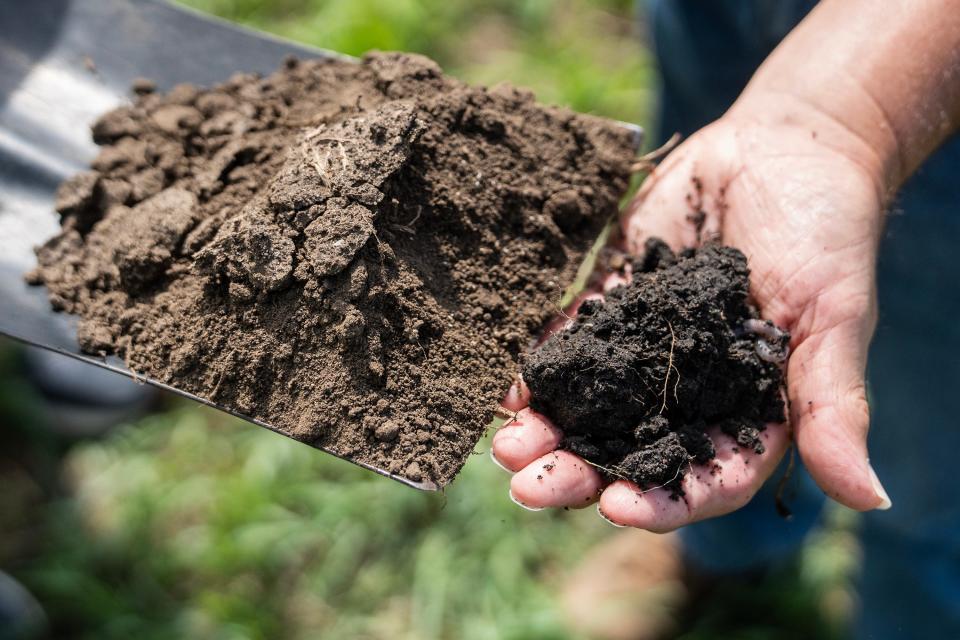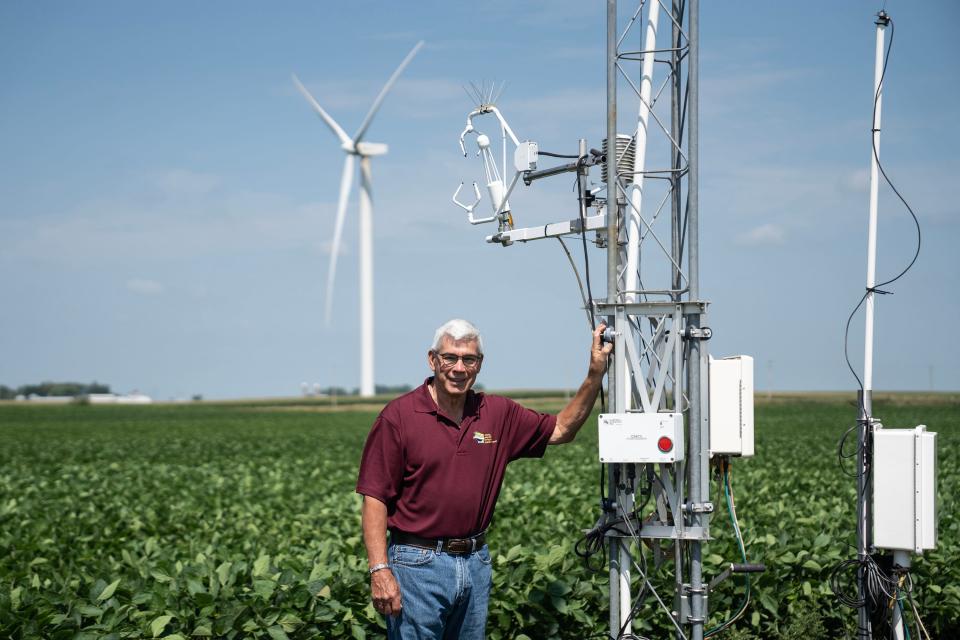Will presidential candidates get down and dirty about how to protect Iowa's precious soil?
With a handful of exceptions, most presidential candidates need to do a lot of prep work to hold their own when responding to agriculture-related questions posed at town halls across rural Iowa.
North Dakota Gov. Doug Burgum and former Arkansas Gov. Asa Hutchinson grew up on farms, and former Vice President Mike Pence governed another Midwest farm state. But many candidates quickly get out of their depth when straying past memorized talking points about their support of ethanol.

But as their buses and SUVs stream past ripening fields of corn and soybeans this fall, presidential candidates would be wise to contemplate the future of the soil where those abundant crops take root.
Our state boasts some of the most fertile land in the world, with rich, dark topsoil that’s been called the black gold of Iowa. It forms the very foundation of the state’s agriculture-based economy.
But new research shows Iowa’s soil is losing much of its richness — at least half of the state’s original bank of 96 billion tons of soil organic carbon is gone.
Des Moines Register agriculture, energy and environment reporter Donnelle Eller describes this research in an exclusive report detailing a national team’s efforts to quantify carbon loss, field by field, across Iowa and the Midwest.

This is important reporting for all Iowans, wherever you live. Eller cites an Iowa State University study concluding that agriculture powers 10% of the state’s $179 billion annual economy, supporting thousands of jobs in industries such as farm equipment manufacturing, crop insurance, livestock and renewable fuels. Loss of soil organic carbon threatens to reduce yields and increase farmers’ costs.
Prominent voices in Iowa have raised the alarm in recent years about soil erosion and soil health.
In “The Land Remains: A Midwestern Perspective on Our Past and Future,” a 2022 book by Neil Hamilton, former director of Drake University’s Agricultural Law Center, he puts Iowa’s rate of soil loss at about 5.5 tons per acre of cropland a year.
Using 2019 yield figures, he estimates the weight of shelled corn produced by an average acre is also about 11,000 pounds. That helps a layman picture the cost: “… For each semi-truckload of corn driven off the farm another truck is driven away filled with rich topsoil,” he writes.
Another good book on the subject is “Iowa’s Remarkable Soils: The Story of Our Most Vital Resource and How We Can Save It,” published in 2021, by Kathleen Woida. Woida, a geologist and adjunct professor at the University of Iowa, describes the state’s loss of topsoil and subsequent loss of carbon-rich humus, which make soils black, as “the browning of the black gold.”
Both soil erosion and loss of organic carbon are daunting issues. Conventionally farmed fields reproduce soil at a rate far slower than it’s eroding away. Hamilton cites an average soil replacement rate of a half-ton a year, a figure that comes from Rick Cruse, an agronomist at Iowa State University whom Hamilton describes as Iowa’s topsoil scientist. So that’s less than a tenth of the rate of the 5.5-ton annual loss.

The time frame for restoring soil health is quicker, with focused action. Approaches such as reduced tillage and widespread use of cover crops can rebuild soil organic matter. Farmers could begin to see soil health improvements in as soon as a year or two and could rebuild a farm’s organic carbon within a decade, said Jerry Hatfield, a retired U.S. Department of Agriculture scientist who’s leading the effort to quantify soil carbon loss.
Transitioning to practices such as planting cover crops poses risk and up-front costs for farmers. Reauthorization of the farm bill and smart use of billions of dollars targeted to combat climate change offer the opportunity to provide incentives to farmers to make the switch.
At town halls across Iowa this fall, I’d love to see Iowans press candidates about what policies they would champion as president to restore and protect soil health in Iowa and across the country. Let’s see who can go beyond rote sound bites and get down and dirty about what it will take to protect our precious soil.
Carol Hunter is the Register’s executive editor. She wants to hear your questions, story ideas or concerns at 515-284-8545, chunter@registermedia.com, or on Twitter: @carolhunter.
This article originally appeared on Des Moines Register: Will presidential candidates get down and dirty about protecting soil?

